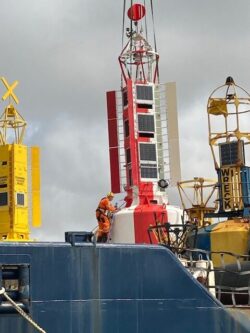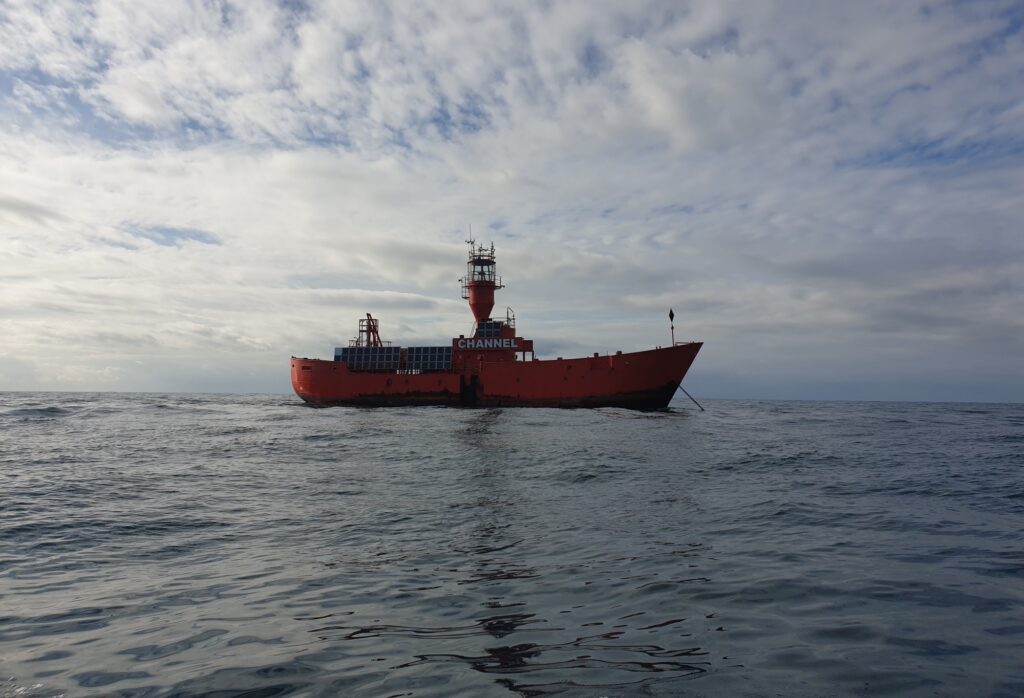Lighthouse charity Trinity House is set to replace its lightvessel in the English Channel with a new state-of-the-art buoy equipped with meteorological technology developed in partnership with the Met Office.
The Channel Lightvessel Automatic has been a reliable platform for meteorological observations for many years and is traditionally one of 22 coastal weather stations monitored by the Met Office and reported in the BBC Shipping Forecast.
The replacement buoy is based upon a standard Type 1 modular format and will incorporate a bespoke electrical design that independently powers the array of sensors and communication equipment required for the Met Office’s meteorological and hydrographic equipment.
Following the grounding of the Amoco Cadiz in 1978, the International Maritime Organization (IMO) adopted the Off Casquets Traffic Separation Scheme (TSS) in 1979, and Trinity House established the Channel Lightvessel to clearly define the new TSS to all mariners.
Further to the discontinuation of the East Channel buoy in 2018, Trinity House determined that as the lightvessel marks only the end of the TSS, and not any physical hazards to navigation, it could be removed now that the marine traffic patterns in the area are well established.
Recognizing that the Channel Lightvessel has become a prominent physical mark for all sectors of the marine community, Trinity House decided to replace the lightvessel with one of its largest Safe Water Mark buoys in order to enable position verification in the area.
The aid to navigation is a standard monitored buoy that will communicate over a roaming 4G network (with a fallback satellite-based communications unit) allowing Trinity House’s 24/7 Planning Centre in Harwich to ensure the 9NM lantern exhibits a light during periods of darkness, to monitor its position via a GPS receiver and to give regular updates on battery condition and state of charge.

The meteorological and hydrographic equipment has been developed in close cooperation with the Met Office, collaborating on a system that utilizes modern technologies to accommodate the required equipment in a way that makes optimal use of the limited available space.
The new meteorological observations set-up will have a full back-up system to maintain service year-round and will report the same parameters as the lightvessel. Visibility sensors will be deployed and monitored for changes, and the new set-up affords the opportunity to collect full spectral wave measurements. The visibility measurements will be published once verified as accurate by the Met Office.



